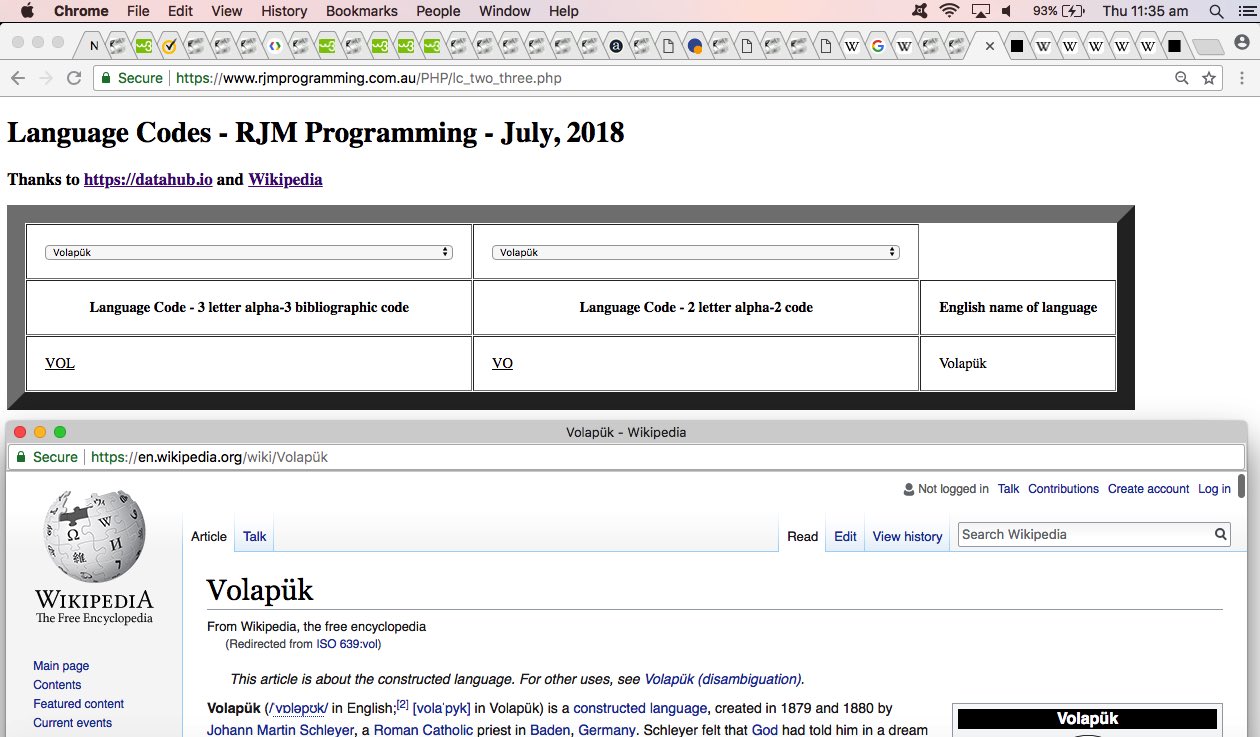My dear departed Dad used to work on Standards Committees for Engineering and henceforth banned all avoirdupois tape measures in the house, astonishingly upsetting his youngest son far more that his wife, who used avoirdupois tape measures a lot. Go figure?! The “troglodyte” in me didn’t see the big deal, but the fact is the world over, International forces have been at play in industries such as my Dad’s Electrical Engineering, so as, as much as possible, to standardize the way we humans see (and share the information about) some scientific issues. Some more of this, and who knows, we might all be speaking Esperanto in some future eon?!
Language is personal to a lot of people’s identity, and our great help, stumbling onto the first one, from …
… opened our eyes a little to the diversity of languages out there in the world, especially as that list didn’t seem to address all the Australian Indigenous languages or some other indigenous ones in other parts of the world. Am no expert here, but it appears ISO 639 is the place to start to consider some of the language code internationalization measures that have occurred in this area. The datahub.io link, above, got us onto 3 letter language codes as one to one correspondence language codes and a “sometimes corresponding” 2 letter code, that also occasionally corresponds to an ISO 2 letter country code that we would have mentioned in other blog posts. Am sure, though, that I don’t have to tell you, you can’t just simplify the situation to “one language code to one country code” mapping we can make in our minds here, as languages can occur in many countries, and any one country can have several native tongues, let alone other languages recognized.
And so the world’s language situation can be complex. Today, we start down a “journey of discovery” here, just dipping our toes and writing a PHP web application called lc_two_three.php that can be tried yourself at this live run link where you can take the data we gratefully access from the first link above, create a links to webpages of the second link above in order for you, the user, to research some of these languages (and language groups).
If this was interesting you may be interested in this too.



